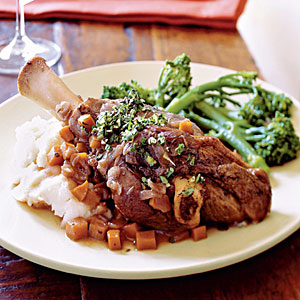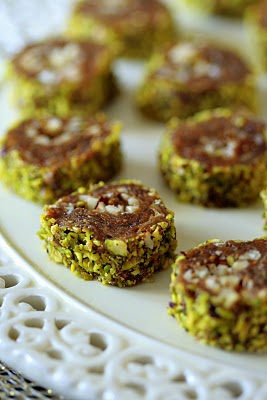I’m at it again – questioning the assumptions and conclusions Jean Bottero made when examining the Old Babylonian culinary tablets from Yale University. Is it some manic spirit that grabs me each Spring and forces me back into the ancient Near East or is it just that it is an activity that grabs my attention from time to time? Whatever the cause, those of you who have been following the blog for a while may remember last year about this time a couple of posts on Mesopotamian ingredients that were either undefined in Bottero’s work or, in my humble opinion, defined incorrectly or made little sense from a culinary point of view.
Well, I finally broke down and ordered a copy of Bottero’s book, The Oldest Cuisine in the World (OCW) and am once again actively engaged in reconstructing ingredients and recipes that I think the good professor erred on. Carob, wheatberries, licorice and pistachio nuts – all are flavors that I think were included in the Mesopotamian diet that Bottero left undefined or defined as other types of ingredients – all too often onions or other plants in the allium family.

Could mersu be a cake? Sure. But there are many other types of things that it could be as well. A look at modern Western Asian and Levantine cuisines shows that mersu could easily have been a date-nut roll or a beautiful date “candy” as pictured here. Both sweets are based on pounded dates and chopped nuts or other fruit or nut toppings.
Adding only some type of flour, mersu could be something like the modern Iranian dessert Ranginak which consists of dates stuffed with pistachios enclosed in a thin crust of dough, or it could be like the modern Lebanese Ma’moul which has a pounded date center covered in a layer of semolina that is then covered in a layer of chopped pistachios.
My point, if it is not evident, is that there is no need to use secondary or tertiary sources to conjure additional ingredients beyond those listed to have a dish fit for an ancient king and his court. A secondary point is that all too often, I believe, Bottero interpreted the ingredients and dishes on the tablets from a French haute-cuisine perspective, instead of a modern regional one that would perhaps be more illuminating and appropriate for understanding Mesopotamian cuisine.
The second recipe known before the Yale tablets is one that Bottero calls “court bouillon”. The ingredients listed are nuhurtu, sahlu, kasu, kamu, cucumber (?), and the meat of a slaughtered animal. Bottero translates these as fennel, watercress, dodder (Cuscuta), cumin and cucumber (all of which he states he is uncertain of). My own research suggests that the ingredients are asafoetida, garden cress (but possibly watercress) wild licorice (Glycyrrhiza glabra), and cumin. The transliteration for the ingredient thought to be cucumber is not included, so I cannot research or comment on it linguistically, but I can say that with a flavor lineup including asafoetida, cress, licorice, and cumin that cucumber makes little culinary sense as it would be overwhelmed in the quantities required (15 grams).
The recipe states to boil six liters of water with kasu and cook for a long time – I presume this to be until it is reduced by at least half or two-thirds. Then it reads that the cucumber (?) should be added and cooked until it is reduced to 1 liter. Then the liquid is strained and meat is added and cooked. I assume that the other ingredients are added when the cucumber (?) is added, but no specific instructions are given, they could be added when the meat is added, or even before the broth is strained.

So, my point here is that many of the ingredients listed by Bottero may not be correct, and many make little or no culinary sense. I’ve been told by a real Assyrian language scholar recently that the whole field of plant name identification is, “diabolically slippery”. What bothers me, however, is that there seem to be a good deal of scholarship about plants and ingredients that existed at the time of his writing that Bottero either ignored or rejected without argument. As I said in the first post on this subject, I may not be right about the ingredients, but I am transparently referenced. (See post on Mesopotamian ingredients for the growing list of terms I have examined and the references I’ve used to inform my point of view).
I’ve adopted this as an ongoing project and am interested to see where it leads, I may even try to reconstruct the licorice and lamb stew and give it a taste, but will have to get my hands on a copy of the Hermann Hunger volume on the kolophones before I do. If I do, I’ll let you know, so we can breathe new life to an ancient Silk Road dish.
(Words and research by Laura Kelley; Confections and Photographs of Date Nut Roll and Date Balls by Kajal of Aaplemint, where many of Kajal’s recipes for her confections can be found. Photograph of Braised Lamb Shank by Becky Luigart-Stayner, borrowed from Google images.)


1 thought on “The Changing Landscape of Mesopotamian Flavors”